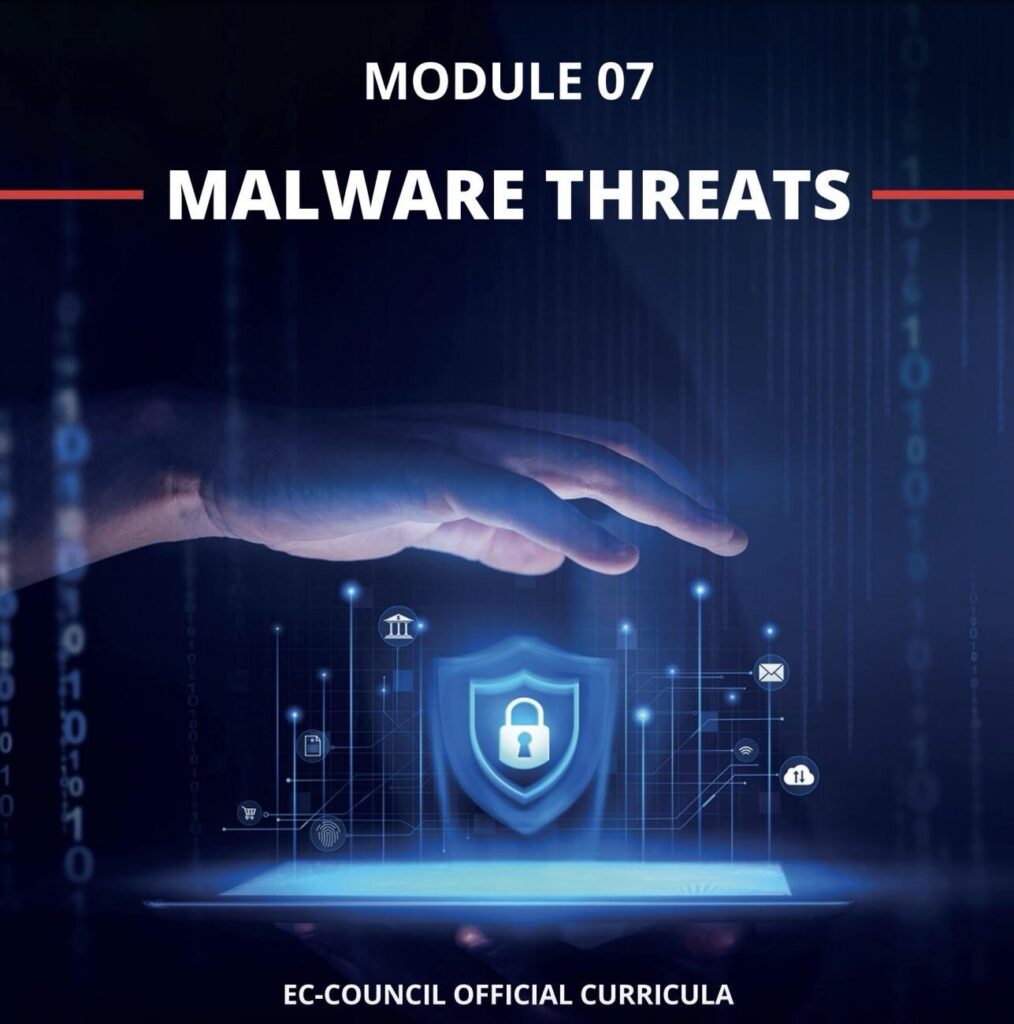CEH v12 Module 07: Malware Threats short for malicious software, refers to any software specifically designed to harm or exploit devices, networks, or data.
There are various types of malware, each with distinct characteristics and purposes. Here are some common types:
- Viruses:
- Viruses attach themselves to legitimate programs and replicate when the infected program runs. They can spread through infected files and can be transmitted via email attachments, removable media, or network connections.
- Worms:
- Worms are standalone malicious programs that can replicate and spread across networks without needing a host file. They exploit vulnerabilities to move from one system to another, causing widespread damage.
- Trojan Horses:
- Trojans masquerade as legitimate software to trick users into installing them. Once activated, they can perform a variety of malicious activities, such as stealing data, providing unauthorized access, or causing damage.
- Ransomware:
- Ransomware encrypts a user’s files and demands a ransom for their release. It often spreads through malicious email attachments, infected websites, or vulnerabilities in software.
- Spyware:
- Spyware is designed to secretly collect information about a user’s activities and transmit it to a third party. This may include sensitive data like login credentials, browsing habits, or personal information.
- Adware:
- Adware displays unwanted advertisements on a user’s device, often within a web browser. While not inherently malicious, it can be intrusive and negatively impact the user experience.
- Rootkits:
- Rootkits are designed to hide the presence of malware by modifying the operating system. They can be challenging to detect and remove, often requiring specialized tools.
- Fileless Malware:
- Fileless malware operates in the device’s memory, leaving little to no trace on the filesystem. It often uses legitimate system tools and processes to execute malicious code, making it harder to detect.
- Advanced Persistent Threats (APTs):
- APTs are sophisticated, long-term cyberattacks often orchestrated by well-funded and organized groups. APTs involve multiple stages, including reconnaissance, initial compromise, persistence, and data exfiltration.
Malware Analysis Procedures:
- Static Analysis: Examining the malware without executing it. This includes inspecting code, file structure, and metadata.
- Dynamic Analysis: Executing the malware in a controlled environment to observe its behavior and interactions.
- Behavioral Analysis: Analyzing the actions and activities of malware during execution to understand its impact.
Malware Countermeasures:
- Antivirus Software: Regularly update antivirus programs to detect and remove known malware.
- Firewalls: Use firewalls to monitor and control incoming and outgoing network traffic.
- Patch Management: Keep software and operating systems up-to-date to patch known vulnerabilities.
- User Education: Train users to recognize phishing attempts, avoid suspicious links, and use strong, unique passwords.
- Network Segmentation: Divide networks into segments to contain and limit the spread of malware.
- Endpoint Protection: Implement security measures on individual devices to protect against malware infections.
Continuous vigilance, timely updates, and a combination of security measures are crucial to mitigating the risks associated with malware threats.








